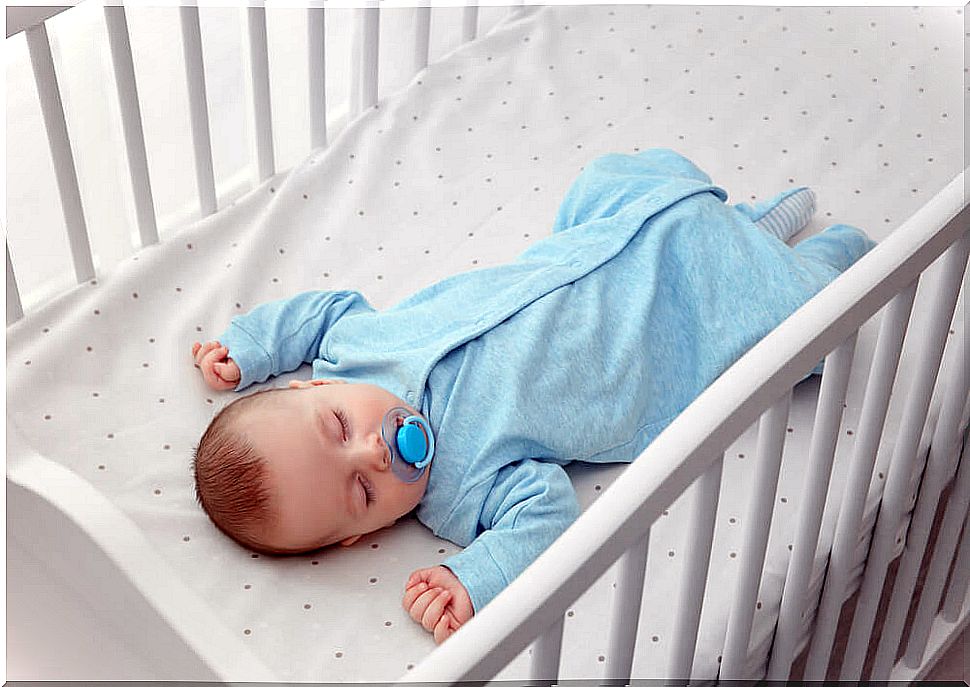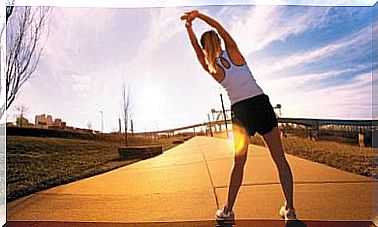Sleep Myoclonus In Children
Sleep myoclonus in children is a benign disorder characterized by involuntary movements of the limbs that usually occur while the child is sleeping. These types of seizures are usually sudden, irregular, occasional and of short duration.
Generally, they usually appear in the first weeks of the baby’s life and do not last beyond seven months. However, cases of older children suffering from them have been reported. As time goes by, they become more sporadic until they disappear completely.
Despite studies that have been done to determine why sleep myoclonus occurs in children, its causes are still unknown. There is also the theory that there is a genetic relationship. Likewise, it has been determined that it occurs in the central nervous system, but has no pathological basis.
Types of sleep myoclonus

Depending on their location, duration, and other factors, myoclonus are classified as focal, multifocal, segmental, or generalized. They are also classified as physiological (produced during sleep) or pathological (caused by a disease).
Benign sleep myoclonus
As we mentioned previously, sleep myoclonus in children are usually benign and do not represent any harm to their health. They are characterized by non-epileptic spasms in children without psychomotor problems. They are very common during the first year of life.
Physiological myoclonus
This type is very common at the beginning of sleep and is described as a strong jolt caused by a feeling of falling into a void and then waking up abruptly. There are healthy adults who report having had this sensation. Additionally, hiccups are also classified within this type of myoclonus, as indicated in the Manual of Diagnostic and Medical Therapeutics.
Essential myoclonus
It is the product of a chronic genetic pathology characterized by focal, generalized or segmental shocks that increase when the patient is under stress. They are sporadic and can appear before the age of 20. They often manifest on the face, trunk, and proximal muscles.
Secondary myoclonus
They derive from other diseases such as viral encephalitis, encephalopathies and hypoxia among others. The source that causes them must be determined in order to apply the appropriate treatment.
Diagnosis and treatment of sleep myoclonus in children

It is normal to feel worried if you notice this type of spasm in your baby. Therefore, when you go to the pediatrician for the control evaluation of your child, tell him what happened. The specialist will carry out a review of the child’s general condition and will be able to determine if the myoclonus is associated with encephalopathy or not.
If necessary, he will refer you to a neurologist. However, if he is diagnosed with childhood myoclonus, do not be alarmed, as this does not mean that your child will suffer from epilepsy.
Treatment, for its part, is aimed at calming symptoms with antiepileptic drugs mainly, as this article published in the Argentine Archives of Pediatrics points out . Benzodiazepines, valproic acid, and levetiracetam have been effective for patients with severe and progressive myoclonic epilepsies.
In the case of benign sleep myoclonus, there are some recommendations to mitigate their effects.
Tips to overcome myoclonus
The following tips can help improve your sleep environment. However, they are in no way a substitute for consulting your doctor. On the other hand, it is advisable to put into practice all the recommendations indicated by the specialist.
Create a harmonious environment
Young babies need at least 16 hours of sleep. In order for your child to be able to rest, you should avoid as much as possible the alterations of the environment that could disturb his sleep. This includes a room decorated with a soft light that invites you to rest. If you don’t have a crib, it is wise to place your child between two pillows in the center of the bed.
Avoid unnecessary inconvenience
Sleep is essential for the proper development of the baby, therefore, you have to avoid waking him up unnecessarily. It is important to put on a clean, dry diaper just before you put him to sleep. Keeping your voice and television volume low will also help you achieve sound sleep.
Set times for daytime naps
Although we have already determined that sleep is very beneficial for babies, it is important to establish routines for daily naps. This is done in order that the little one can sleep soundly at night. In children, sleep myoclonus usually present in the REM phase.
Now that you know more about this benign sleep disorder, do not hesitate to consult any questions that may arise in this regard with a specialist. He will know better how to act in the event that your little one suffers from it.









